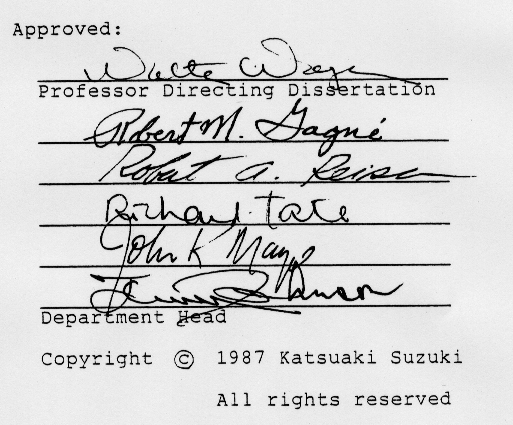
by Katsuaki SUZUKI
Unpublished Doctoral Dissertation,
Florida State University, U.S.A.
A Dissertation submitted to the Department of Educational Reserch
fulfuillment of the requirements for
the degree of Doctor of Philosophy

| Type of Learning Outcome | Essential Prerequisites | Supportive Prerequisites |
|---|---|---|
| Intellectual Skill | Simpler Component Intellectual Skills (rules, concepts, discriminations) | Attitudes Congnitive Strategies Verbal Information |
| Verbal Information | Meaningfully Organized Sets of Information |
Language Skills Congnitive Strategies |
| Cognitive Strategies | Specific Intellectual Skills(?) |
Intellectual Skills Verbal Information |
| Attitudes | Intellectual Skills (sometimes) Verbal Information (sometimes) | Other Attitudes Verbal Information |
| Motor Skills | Part-skills (sometimes) Procedural Rules (sometimes) | Attitudes |






Regression model Path model
Structural Equations
X3 = P31 X1 + P32 X2 + R X3 = P31 X1 + P32 X2 + R
X2 : P21 X1 +R
Implied Correlation Coefficients
r13 = P31 + r12 X P32 r13 = P31 + P21 X P32
r32 = P32 + r12 X P31 r32 : P32 + P21 X P31
r21 = P21
Note: X1: Skill acquisition, X2: motivational treatment,






